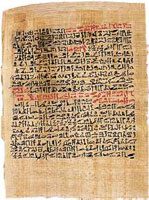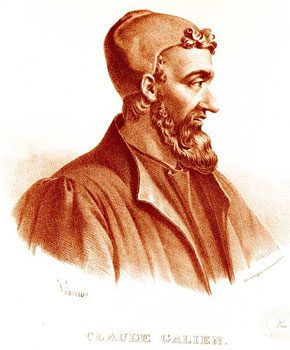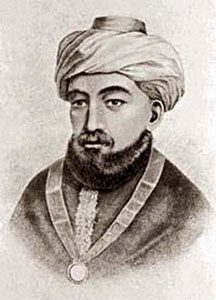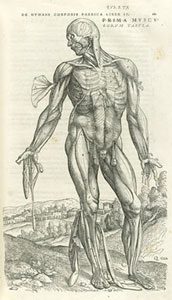George Dunea
Chicago, Illinois, United States
Introduction
In the second half of the 20th century nephrology became a fully-fledged specialty owing largely to the development of renal biopsy, dialysis, and kidney transplantation.1 Yet the seeds of these great advances were sown centuries earlier, based on the work and observations of scientists and clinicians dating to the earliest times of antiquity.2 Then, as now, humans suffered from diseases of the kidney and urinary tract. But evidence going back to the dawn of history is fragmentary and difficult to interpret, despite the many efforts of the historians and archeologists who have assiduously sought to expand knowledge by digging deep into the ground, opening old graves, unwrapping mummies, deciphering ancient alphabets, and trying to interpret old inscriptions and manuscripts.
Mesopotamia
Some of the earliest knowledge about kidney and urinary diseases comes from the cradle of Western civilization, Mesopotamia, from the cuneiform clay tablets of Akkadia, Assyria, and Babylon that contain references to urinary obstruction, stone, cysts, urethritis, stricture, and urethral discharge.3,4 In ancient Babylon physicians made diagnoses depending on whether the urine looked like paint, wine dregs, beer, or beet juice. They treated symptoms with remedies derived from plants or minerals. They administered drugs by blowing them through a tube into the urethra, most likely also to relieve urinary obstruction, and using alcohol as an anesthetic. Much of the medical information generated in Mesopotamia was later transmitted to the Mediterranean, especially to Greece.3,4
 |
|
Ebers papyrus, |
Egypt
In ancient Egypt priest-physicians have recorded many details of their patients’ symptoms on papyrus scrolls. Curiously, they cooked some of their old papyri books in oil and smeared them on their patients to relieve symptoms of dropsy or fluid retention.5 They embalmed their dead, removing most of the viscera but leaving behind the kidneys and the heart. In the Ebers papyrus of 1550 BCE they refer to retention of urine, dysuria, and frequency. Hematuria, mentioned over 50 times, was probably due to schistosomiasis, then as now endemic in the valley of the Nile. Examination of mummies has led to discovery of kidney abscesses and stones, parasite ova, and congenital renal deformities. Treatments are listed in the Ebers papyrus in some 24 paragraphs under the heading: “Starting remedies to make disappear the retention of urine when the lower abdomen is full.”5
Greece
Records of urinary disorders are found in the Hippocratic Corpus, a collection of some 60 treatises that may represent the work of several medical writers. How much was written by Hippocrates himself remains uncertain. Nevertheless, Hippocrates of Cos (460–377 BCE) is regarded as the father of medicine, and many of the aphorisms attributed to him refer to diseases of the kidney:
“Bubbles appearing on the surface of the urine indicate disease of the kidneys and a prolonged illness.”
“Colorless urine is bad.”
“The sudden appearance of blood in the urine indicates that a small renal vessel has burst.”
“Diseases of the kidney and of the bladder are difficult to cure in old age.”
Other comments concern cases where the urine was turbid or contained pus or blood, bran-like particles, or sandy sediment.1,2,6–8
Aristotle, whose opinions dominated Western thought for over 2,000 years, also wrote about the kidney. From his observations on fish and birds he concluded that the kidneys were not essential to life, and from the rhesus monkey he incorrectly deduced that the right kidney was situated higher than the left. He thought the kidneys were there to anchor the blood vessels in the body, and also to secrete fluid not eliminated otherwise. He considered renal fat as the cause of cancer and of gangrene, and in De Partibus Animalium noted that “very often the kidneys are found to be full of stones, growths, and small abscesses.”7
In the 3rd and 2nd century BCE other Greek physicians also made contributions, describing the prostate gland, declaring that urine was formed in the kidney, reporting on recto-vesical fistula, and performing operations. They applied pressure over the lower abdomen to relieve urinary retention, and recommended the use of poultices with soothing and diuretic properties over the kidneys.6
Rome and Byzantium
 |
|
Galen of Pergamon |
Physicians in Rome were often Greeks from Asia Minor who had studied in Alexandria.6,8,10,11 Celsus (63 BCE–14 CE), though not a physician, wrote on many medical subjects, including lithotomy and the use of a bronze catheter.6 In his writings, Pliny the Elder also refers to the kidney.6 Areteus of Capadocia (81–138 CE), now remembered mainly for describing diabetes mellitus as the melting of the flesh into the urine, wrote about hydronephrosis, gout, renal colic, strangury, postobstructive diuresis, edema, and the anemia of renal insufficiency.6,8,12 Dioscorides, also from Asia Minor and perhaps physician to emperor Nero, practiced in Rome during the first century and wrote an extensive pharmacopoeia, noting that certain poisons caused renal inflammation, and recommending enemas with ptisan or mallow for renal failure.6,8 Galen of Pergamon (130–200 CE), physician to emperor Marcus Aurelius, referred in his extensive writings to renal cysts, breakage of the capillaries into the kidney, thrombosis, and inflammation. Called the father of experimental medicine, he ligated the ureters to prove that urine flowed from the kidneys to the bladder.6,8
Among Byzantine physicians, Rufus of Ephesus in the first century CE described renal failure, abscesses, and calculi, recommending poultices of grilled cicadas as a diuretic, advising flushing the kidneys with large amounts of water, and prescribing urinating in a hot bath to relieve retention of urine. Somewhat later Oribasius (326–403), physician to emperor Julian the Apostate, wrote profusely on medical matters, summarizing the works of Galen and others in 70 books.11 First to use the term “ureter,” he treated dysuria and ureteral stone, did anatomical dissections, described the systemic and pulmonary circulation, discerned the existence of capillaries, and suggested that the kidneys absorbed urine from the blood stream.6,8,10,11
In the 9th century Theophanes Nonus noted hematuria resulting from poisonous remedies and from the venom of serpents.8 Other Byzantine physicians wrote right up to the 14th century about kidney inflammation and failure, emphasizing the changes in the appearance of the urine, developing the practice of uroscopy,13 and often achieving fame as physicians to the Byzantine emperors.
 |
|
Moses Maimonides |
Arabs
The 9th and 10th centuries were a golden age for Arab medicine, in which several physicians achieved fame for their clinical acumen and perspicacious observations. Rhazes (865–925), a musician who later became a physician and was called the Galen of Islam,14 described in his many clinical writings renal abscess or severe infections with pus in the urine, kidney stones, and renal failure from systemic diseases. Even more prolific was Avicenna (980–1037), poet, politician, and writer, whose works greatly influenced Western Renaissance medicine and who wrote extensively on the color, density, odor, and sediments of urine, foreshadowing the later uroscopists. Recommended treatments included inserting a bug or louse into the urethral meatus to stimulate micturition. He wrote several excellent descriptions of clinical cases, as did several other Arab authors until the 13th century.14
There were also eminent Jewish physicians living in the Arab possessions around the Mediterranean, notably Moses Maimonides (1138–1204), born in Cordova but eventually settling down in Cairo and attending on the sultan Saladin. A renowned medieval rabbi, philosopher, astronomer, and physician, he wrote 10 treatises on medicine, including an entire chapter of aphorisms dealing with urinalysis. He discussed lower urinary tract obstruction, hesitancy, narrow stream, retention, pyuria, and hematuria. He agreed with Hippocrates that diseases of the kidney in the elderly were difficult to cure, and noted red urine in patients who probably had glomerulonephritis. In patients with blackwater fever he noted that “black urine and black sediment are extremely malignant and indicate serious illness. They occur in association with what resembles the death of natural resources . . . I have never seen anyone who urinated black urine who survived.”15,16
Uroscopy
Uroscopy, the naked eye examination of the urine for diagnosis, is as old as medicine itself, based on the assumption that diseases could be identified and treated following such visual inspection.13 It was advocated by Hippocrates, though without much enthusiasm.6 Several of the Greek physicians practiced uroscopy and helped develop a complex diagnostic model based on the theories of the four humors.13 Many treatises on uroscopy were published in antiquity and later by Byzantine, Arab, and Latin physicians.13 Uroscopic theory and practice reached an apogee between the 9th and 14th century in southern Italy at the medical school of Salerno, then a melting pot of different cultures.17 There several masters of medicine or magistri wrote (or translated from Arabic) books on diagnostic uroscopy. One of its major exponents, Isaac Ebreus Isaac (880–940), assembled in his Guida Medicorum many of the principles of uroscopy. He was followed by Magister Maurus, according to whom fluids were separated in the body by the stomach and liver, with the generation of humors (1250 CE). Gilles de Corbeil, a Frenchman, went to Salerno, then returned to Paris and wrote Songs on Urinary Judgements, a composition in verse that remained popular until the 16th century.17 A 13th century anonymous manuscript titled De Urinis contains aphorisms such as:
Clear urine, pale or almost green indicates pain in the stomach in males, but in women means inflammation or phlegm from the umbilicus to the throat, and thirst.
Small volume urine which is sulphurous indicates diarrhea.
Urine which is red with fluid beams indicates disease of the spleen.
A red circulus means pain in the head due to blood.
Urine of a vicious woman is quite colored, cloudy by night, and dense in the morning.
Urine of a virgin is clear, white, light, and transparent, with very small bubbles on the surface.17
Sclerosis of the kidneys
 |
|
Paul of Aegina’s Pragmateia |
Hardening or sclerosis of the kidneys had been recognized as the hallmark of chronic renal failure since antiquity.1 Thus Rufus of Ephesus compiled a treatise in which he noted that sclerosis of the kidneys was not painful, but might cause dropsy. He recommended rest, enemas, cupping of the loins, baths, refrigerant and sedative medicines given internally.1 Aetius of Amida (502–575), court physician to emperor Justinian in Constantinople, based his Tetrabiblion largely on the works of Rufus, Hippocrates, and Galen, and also mentioned hardening of the kidneys.1,6,8–11 Paul of Aegina (625–690), practicing in Alexandria even after the Arab conquest, also noted renal hardening and wrote in his seven books that “when hardness occurs in the kidneys it does not cause pain . . . but the limbs lose their strength, little urine is passed, and the whole habit resembles that of dropsical persons.” He recommended emollients to soften the kidneys, frictions and fomentations, clysters to clear out the bowels, and diuretics such as nard, cassia, St. John’s wort pepper, sweet hay, boiled squill in wine and honey, moist alum, flakes of copper, and should all fail, ox dung dried and drunk (one spoonful every day).1,6,8–11
Also aware of sclerosis of the kidneys as a cause of illness were the Arab physicians Rhazes and Avicenna.14 William of Saliceto (1210–1277) observed that hard kidneys (duritie in renibus) were difficult or even impossible to treat. He moved to Bologna in 1269 to become an outstanding teacher of medicine, and during his time taught more than 10,000 students.1,18 He emphasized bedside instruction and wrote an extensive medical textbook, mentioning that hardness of the kidney could be the result of an abscess, an episode of high fever, or arise spontaneously. The hardness, he wrote, looks chalk-like. Its clinical signs were a reduction in urinary output, a dull pain or heaviness in the back and sides, and after a time enlargement of the belly and generalized edema.18
Later, the Flemish physician Jan Baptiste Van Helmont (1579–1644) devoted much of his time to research, carrying out autopsies on patients who had died with gross ascites, noting that their kidneys were shrunken and hard, and concluding that the kidney was the cause of the edema (“ren artifex hydrops”).19
 |
|
Paracelsus |
Morgagni
Giovanni Battista Morgagni (1682–1771), often regarded as the founder of pathological anatomy, made similar observations. After studying in Bologna with Valsalva, he moved to Padua, where he remained professor of theoretical medicine and anatomy for 50 years. He carried out many autopsies, correlating anatomical findings with the clinical symptoms.
Towards the end of his career he published observations on cases he had studied over 50 years, including necropsy descriptions of diseased kidneys: solitary, asymmetrical, irregular, hardened, softened, suppuration, hydronephrosis, calculi, tumors, cysts.20,21 Of particular interest, he described a patient who had suffered from nausea, vomiting, headache, and episodes of loss of consciousness, and who at autopsy had greatly shrunken, hard, irregularly shaped greyish kidneys. He concluded that these renal changes were the cause of the symptoms.20
Paracelsus
Theophrastus Bombastus von Hohenheim (1493–1541), better known as Paracelsus, is perhaps the most colorful medical figure of the Renaissance. Born in Switzerland, he studied medicine in several European cities, practiced in Strasbourg and Basel, and eventually wandered through various German, Swiss, and Austrian towns. His death has often been subject of speculation, being variously attributed to murder, accident, congenital syphilis, liver failure, and also to kidney disease, as suggested by the finding of rickets in his exhumed skull in 1880.22
 |
| Vesalius’ muscle man from De humani corporis fabrica |
Paracelsus wrote on urinalysis, proteinuria, hematuria, and gout. Particularly interested in dropsy, he described its symptoms and signs, commented on its prognosis, noted that in its advanced stages “the urine decreases and thickens,” and was first to use mercury for treatment. He attempted chemical analysis of the urine, adding wine or vinegar or rennet to it and noting that it curdled and produced a precipitate. He also assessed urine by its weight, a precursor of measuring the specific gravity. He combined medicine with alchemy and astrology, and claimed to affect many cures with his Tincture of Philosophers. His epitaph in Salzburg reads: “Here lies the distinguished doctor, who with wonderful art cured dire wounds, leprosy, gout, gave to the poor all the goods he accumulated, and exchanged life for death in the year of our Lord 1541.”22
Andreas Vesalius
Born in Brussels, Andreas Vesalius (1514–64) studied in Paris and Padua, and on the day after graduation was appointed professor of anatomy at the University of Padua. There he carried out many dissections and became famous for his lectures and anatomical drawings. Between the ages of 24 and 27 he prepared a book of over 700 pages of anatomical illustrations, and eventually became physician to Emperor Charles V. In his famous plates he described the anatomy of the kidney, also attempting to understand its function, and concluding that urine extracted from the blood entered a cavity before being excreted into the urinary passages. His brilliantly illustrated textbook of anatomical illustrations has been reproduced for centuries.19,23
Marcello Malpighi
Founder of microscopical anatomy, and professor of anatomy at Messina and later at Bologna, Marcello Malpighi (1628–94) was first to describe the renal glomerulus (Malpighian corpuscle). Using the microscope as avant-garde technology, he also studied the brain, liver, tongue, lung, and skeletal muscle, describing their architecture and postulating what their function might be. In the course of his studies of the frog’s mesentery, he discovered the presence of capillaries. In the kidney he described the pyramids of the renal medulla and the collecting ducts, and noted the opening of these ducts at the papilla. In the omentum of the porcupine he first noticed the red cells, which he interpreted as being fat globules or constituents of coagulated blood. Using a microscope with x30 magnification and sometimes with prior dye injection, he described the glomeruli, which when injected “turned black . . . hanging like apples from the blood vessels, which, swollen with the black fluid, look like a beautiful tree.”24–26
References
- Black, Sir Douglas. The story of nephrology. J R Soc Med 1980; 73: 514–518.
- Marketos, S. G. Hippocratic medicine and nephrology. Am J Nephrol 1994; 14: 264–269.
- Geller, M. J., and Cohen, S. L. Kidney and urinary tract disease in ancient Babylonia, with translations of the cuneiform sources. Kidney International 1995; 47: 1811–1815.
- Mujais, S. The future of the realm: medicine and divination in ancient Syro-Mesopotamia. Am J Nephrol 1999; 19: 133–139.
- Salem, M. E., and Eknoyan, G. The kidney in ancient Egyptian medicine: Where does it stand? Am J Nephrol 1999; 19: 140–147.
- Diamandopoulos, A. A. Twelve centuries of nephrological writings in the Graeco-Roman world of the Eastern Mediterranean (from Hippocrates to Aetius Amidanus). Nephrol Dial Transplant 1999; 14[Suppl 2]: 2–9.
- Marandola, P., Musitelli, S., Jallous, H., Speroni, A., de Bastiani, T. The Aristotelian kidney. Am J Nephrol 1994; 14: 302–306.
- Marketos, S. G., Eftychiadis, A. G., Diamandopoulos, A. Acute renal failure according to ancient Greek and Byzantine medical writers. J R Soc Med 1993; 86: 290–293.
- Torres, V. E., and Watson, M. L. Polycystic kidney disease: antiquity to the 20th century. Nephrol Dial Transplant 1998; 13: 2690–2696.
- Eftychiadis, A. C. Diseases in the Byzantine world with special emphasis on the nephropathies. Am J Nephrol 1997; 17: 217–221.
- Poulakou-Rebelakou, E., and Marketos, S. G. Kidney disease in Byzantine medical texts. Am J Nephrol 1999; 19: 172–176.
- Poulakou-Rebelakou, E. Aretaeus on the kidney and urinary tract diseases. Am J Nephrol 1997; 17: 209–213.
- Diamandopoulos, A. A. Uroscopy in Byzantium. Am J Nephrol 1997; 17: 222–227.
- Eknoyan, G. Arabic medicine and nephrology. Am J Nephrol 1994; 14: 270–278.
- Massry, S. G. Maimonides: physician and nephrologist. Am J Nephrol 1994; 14: 307–312.
- Rosner, F. Nephrology and urinalysis in the writings of Moses Maimonides. Am J Kidney Diseases, 1994; 24: 222–227.
- Canton, A. and Castellano M. Theory of urine formation and uroscopic diagnosis in the Medical School of Salerno. Kidney Int 1988; 34: 273–277.
- Bonomini, V., Campieri, C., Zuccoli, M. Guilielmus de Saliceto and his contributions to renal medicine. Am J Nephrol 1997; 17: 274–281.
- De Broe, M., De Weerdt, D., Ysebaert, D., Vercauteren, S., De Greef, K., De Broe, L. The Low Countries—16th/17th century. Am J Nephrol 1999; 19: 282–289.
- Antonello, A., Calo, L., Bonfante, L., Mennella, G., Abaterusso, C., Spinello, M., Favaro, S., D’Angelo, A. Giovanni Battista Morgagni, a pioneer of clinical nephrology, Am J Nephrol 1999; 19: 222–225.
- Fogazzi, G. B. Kidney diseases in the major work of Giovanni Battista Morgagni. Nephrol Dial Transplant 1998; 13: 211–212.
- Eknoyan, G. On the contributions of Paracelsus to nephrology. Nephrol Dial Transplant 1996; 11: 1388–1394.
- DeBroe, M., Sacre, D., Snelders, E. D., De Weerdt, D. L. The Flemish anatomist Andreas Vesalius (1514–1564) and the kidney. Am J Nephrol 1997; 17: 252–260.
- Mezzogiorno, A. and Mezzogiorno, V. Marcello Malpighi (1628–1694). Am J Nephrol 1997; 17: 269–273.
- Fogazzi, G. B. The description of the renal glomeruli by Marcello Malpighi. Nephrol Dial Transplant 1997; 12: 2191–2192.
- Ioli, A., Mento, G., Venniro, G., Savica, V., Bellinghieri, G. Marcello Malpighi. Am J Nephrol 1993; 13: 223–228.
GEORGE DUNEA, MD, FACP, FRCP, FASN is the president and CEO of the Hektoen Institute of Medicine. He is also a professor of medicine at University of Illinois at Chicago, the medical director of Chicago Dialysis Center, and founding chairman emeritus, Division of Nephrology, Stroger Hospital of Cook County. He also serves as Editor-in-Chief of Hektoen International.
Fall 2012 | Sections | Nephrology & Hypertension

Leave a Reply